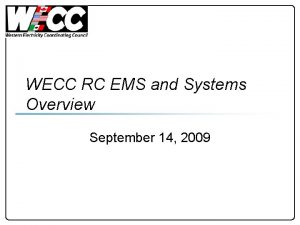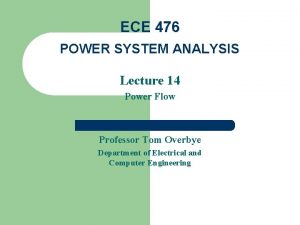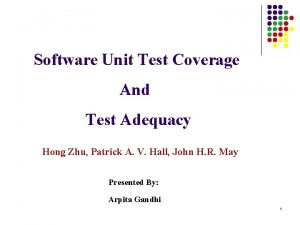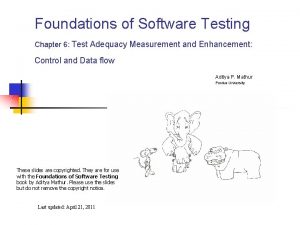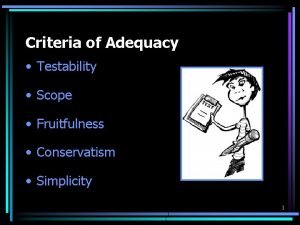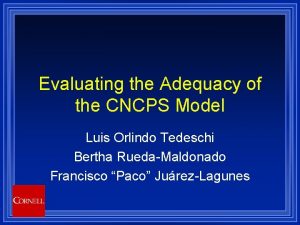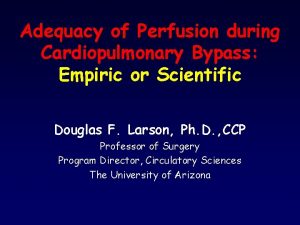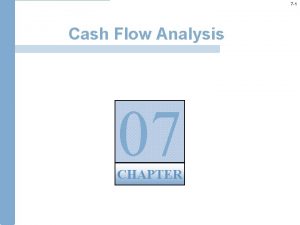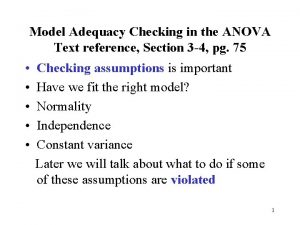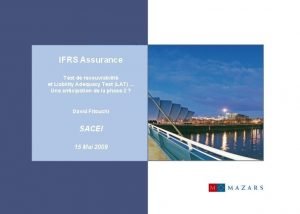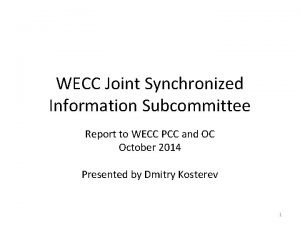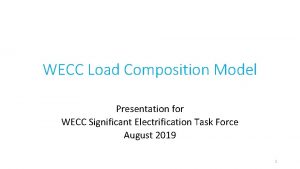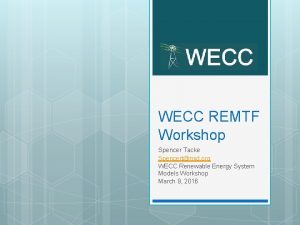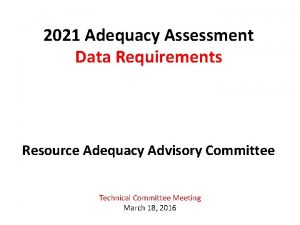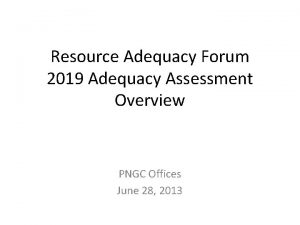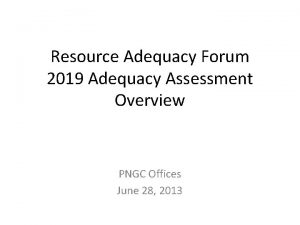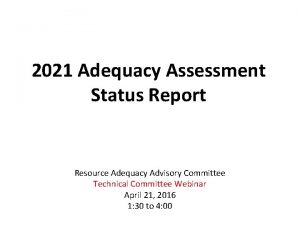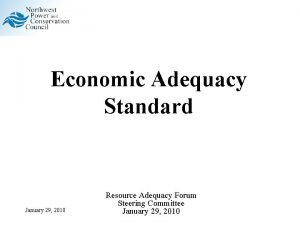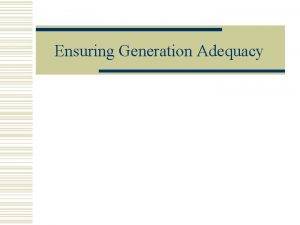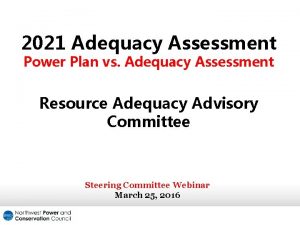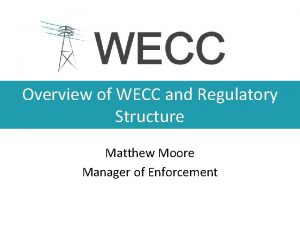WECC Resource Adequacy Work March 10 2020 Matthew


















- Slides: 18

WECC Resource Adequacy Work March 10, 2020 Matthew Elkins, Manager Performance Analysis & Resource Adequacy

Resource Adequacy Timeline § December (2019)—Data Request Sent to Entities § March 31—Data Submitted to WECC § April 8—Summer Assessment § June 17—LTRA § August 18—Prob-A § September 18—Winter Assessment 2

WECC-BA-LSE Coordination WECC Balancing Authority LSE/Util. Municipal State PUC Contractor 3

Validation—Data Issues § Missing fields— • Commission dates • Summer/winter capacities • Unit fuel types • Class codes § Duplications— • Multiple BAs reporting same units 4

Validation—NERC Class Code Existing—In-service Tier 1—Under Construction or Signed Agreement (service, purchase, market participation, etc. ) § Tier 2—Signed Study (feasibility, system impact, facilities, etc. ) § Tier 3—In an Interconnection queue Common examples: § Tier 1 resources with historical commission dates § Tier 2– 3 resources with commission dates of less than one year § Future resources with no commission date § § 5

Validation—WECC Class Code § Existing Generation 0. . . . Existing units of Dec. 31 of actual year 10. . . . Behind-the-meter § Generation Additions 1. . . . Units under active construction 2. . . . Have approval and have a signed agreement 3. . . . NERC T 1 and T 2 not in WECC 1 or 2 4. . . . NERC T 3 5. . . . Units that have been cancelled 6

Validation—Status Code Existing Generation OP Operating or short-term outage SB Cold standby, 3 -6 months to reactivate OS Out of service RE Retired 7

Validation—Status Code Generation Additions P Planned for installation but not under active construction L Regulatory approval pending but not under active construction (started site preparation) T Regulatory approval received but not under active construction U Under active construction, less than or equal to 50% complete (based on construction time to first electric date) V Under active construction, more than 50% complete (based on construction time to first electric date) TS Construction complete but not yet in commercial operation (including low power testing of nuclear units) A Generator capability increased (rerated or relicensed) D Generator capability decreased (rerated or relicensed) (indicate reason in comments field) 8

Validation—Status Code Generation Additions, cont. M Generator to be put in deactivated shutdown status RA Previously retired or deactivated generator planned for reactivation RC Retirement, committed RU Retirement, uncommitted FC Existing generator planned for conversion to another fuel or energy source IP Indefinitely postponed CO Change of ownership (including change of shares of jointly-owned units) 9

Validation—Comment Review § Review all comments received in the comment fields: • Public Comments • Non-Public Comments 10

Manual Processing § Split jointly owned resources § Develop hourly load forecast § Develop hourly probability distributions for: • Demand • Hydro • Wind • Solar § Run Markov models on baseload resources 11

Model § Multi-Area Variable Resource Integration Convolution (MAVRIC) model § Multi-Area—Incorporates all BAs in the Western Interconnection § Variable Resource Integration—Ability to understand the variability of new resources § Convolution—A type of probabilistic study 12

Long-Term Reliability Assessment § Focused on Peak Summer and Winter hour for next 10 years § Compares demand to capacity plus transfers § Forecasts cannot precisely predict the future. Instead, many forecasts report probabilities with a range of possible outcomes 13

Probabilistic Assessment Resource Availability Demand January December § Looks at all hours of the year for the next 10 years § Analyzes a range of possibilities around the expected § Determines where extreme tail risk may occur in the interconnection 14

NERC Enhancements § Evolution and adaptation § Integrate more probabilistic analyses § Increase communication and outreach § Incorporate regional scenario case studies 15

Seasonal Assessments § Peak Hour § Energy lost due to: • Forced outages • Extreme conditions 16

Future of WECC RA § Resource Adequacy Forum (May 27– 28) § Individual “What-If” scenarios § Balancing Authority collaboration § Continued evolution of tools and reporting 17

Contact: Matthew Elkins, Manager Performance Analysis & Resource Adequacy 18
 March march dabrowski
March march dabrowski Ems cortal
Ems cortal Wecc training
Wecc training Tom overbye
Tom overbye The number of test of adequacy is
The number of test of adequacy is Briefly explain test adequacy criteria with proper example
Briefly explain test adequacy criteria with proper example Criterion of adequacy
Criterion of adequacy Horizontal and vertical adequacy
Horizontal and vertical adequacy Capital adequacy ratio formula
Capital adequacy ratio formula Certificate of adequacy
Certificate of adequacy First-order logic examples
First-order logic examples Adequacy
Adequacy Adequacy
Adequacy Cash flow adequacy ratio
Cash flow adequacy ratio Model adequacy checking anova
Model adequacy checking anova Liability adequacy test
Liability adequacy test Resource loading vs resource leveling
Resource loading vs resource leveling Perbedaan resource loading dan resource leveling
Perbedaan resource loading dan resource leveling Human resource management question paper pdf
Human resource management question paper pdf

